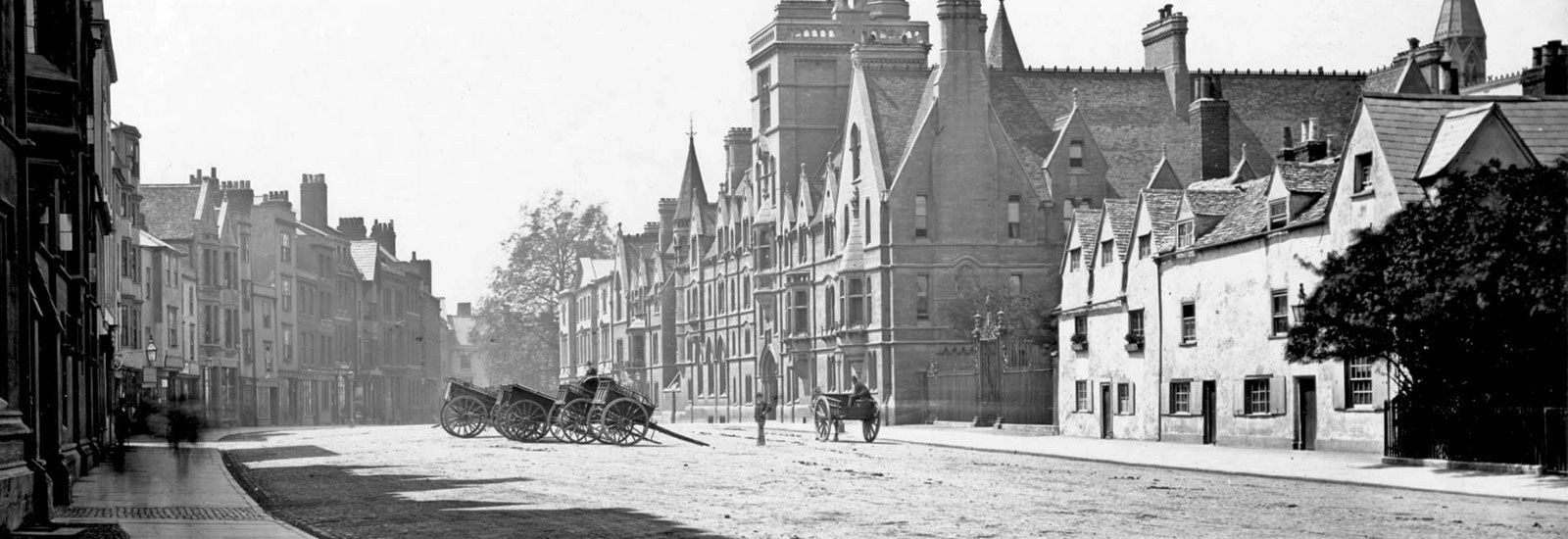Oxford is a world-leading centre of learning, teaching and research and the oldest university in the English-speaking world.
Introduction and history
As the oldest university in the English-speaking world, Oxford is a unique and historic institution. There is no clear date of foundation, but teaching existed at Oxford in some form in 1096 and developed rapidly from 1167, when Henry II banned English students from attending the University of Paris.
In 1188, the historian, Gerald of Wales, gave a public reading to the assembled Oxford dons and in around 1190 the arrival of Emo of Friesland, the first known overseas student, set in motion the University’s tradition of international scholarly links. By 1201, the University was headed by a magister scholarum Oxonie, on whom the title of Chancellor was conferred in 1214, and in 1231 the masters were recognised as a universitas or corporation.

In the 13th century, rioting between town and gown (townspeople and students) hastened the establishment of primitive halls of residence. These were succeeded by the first of Oxford’s colleges, which began as medieval ‘halls of residence’ or endowed houses under the supervision of a Master. University, Balliol and Merton Colleges, which were established between 1249 and 1264, are the oldest.
Less than a century later, Oxford had achieved eminence above every other seat of learning in the country, and had won the praises of popes, kings and sages by virtue of its antiquity, curriculum, doctrine and privileges. In 1355, Edward III paid tribute to the University for its invaluable contribution to learning; he also commented on the services rendered to the state by distinguished Oxford graduates.
From its early days, Oxford was a centre for lively controversy, with scholars involved in religious and political disputes. John Wyclif, a 14th-century Master of Balliol, campaigned for a Bible in the vernacular, against the wishes of the papacy. In 1530, Henry VIII forced the University to accept his divorce from Catherine of Aragon, and during the Reformation in the 16th century, the Anglican churchmen Cranmer, Latimer and Ridley were tried for heresy and burnt at the stake in Oxford.
The University was Royalist in the Civil War, and Charles I held a counter-Parliament in Convocation House. In the late 17th century, the Oxford philosopher John Locke, suspected of treason, was forced to flee the country.
The 18th century, when Oxford was said to have forsaken port for politics, was also an era of scientific discovery and religious revival. Edmund Halley, Professor of Geometry, predicted the return of the comet that bears his name; John and Charles Wesley’s prayer meetings laid the foundations of the Methodist Society.
The University assumed a leading role in the Victorian era, especially in religious controversy. From 1833 onwards The Oxford Movement sought to revitalise the Catholic aspects of the Anglican Church. One of its leaders, John Henry Newman, became a Roman Catholic in 1845 and was later made a Cardinal. In 1860 the new University Museum was the scene of a famous debate between Thomas Huxley, champion of evolution, and Bishop Wilberforce.
From 1878, academic halls were established for women and they were admitted to full membership of the University in 1920. Five all-male colleges first admitted women in 1974 and, since then, all colleges have changed their statutes to admit both women and men. St Hilda’s College, which was originally for women only, was the last of Oxford’s single sex colleges. It has admitted both men and women since 2008.
During the 20th and early 21st centuries, Oxford added to its humanistic core a major new research capacity in the natural and applied sciences, including medicine. In so doing, it has enhanced and strengthened its traditional role as an international focus for learning and a forum for intellectual debate.
Facts and figures
Did you know?
- Oxford was ranked first in the world in the Times Higher Education (THE) World University Rankings for 2017, 2018, 2019, 2020, 2021 and 2022.
- There are more than 25,000 students at Oxford, including 12,510 undergraduates and 13,044 postgraduates.
- Entry to undergraduate courses at Oxford continues to be very competitive: there are usually only around 3,300 places, and over 23,000 people applied to start in 2020.
- The majority of Oxford’s UK undergraduates come from state schools. For 2020 entry, over 69% of UK offers went to students from the state sector.
- Oxford offers more than 350 postgraduate programmes.
- For 2020/21 entry, over 34,500 applications were received for some 6,675 postgraduate places.
- International students make up almost 45% of our total student body – around 11,500 students. Students come to Oxford from more than 160 countries and territories.
- According to the 2014 Research Excellence Framework, the official UK-wide assessment of all university research, Oxford has the largest volume of world-leading research in the UK.
- The University of Oxford contributes around £15.7 billion to the UK economy, and supports more than 28,000 full time jobs (2018/19). Find out more here.

